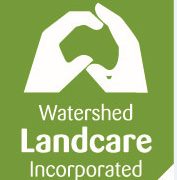Have you seen Quolls in the area?
As part of the Wild Encounters project, we will be investigating threatened species and biodiversity
in our local area. In this week’s Catchment Corner we will be taking a look at the Spotted-tailed Quoll, mainland Australia’s largest carnivorous marsupial.
The Spotted-tailed Quoll (Dasyurus maculatus) is about the size of a domestic cat and can be distinguished from the other Quoll species by the spots on its tail. Usually nocturnal, they are agile climbers but spend most of their time on the forest floor, using hollow logs, rocky outcrops and crevices to shelter and raise their young. Spotted-tailed Quolls have a distinctive bounding gait and a call “like a blast from a circular saw”.
Their diet consist predominantly of medium-sized mammals but this efficient predator will take prey ranging from insects to small wallabies. Carrion is also an important component of the diet.
Habitat includes rainforest, open forest, woodland, coastal heathland and inland riparian forest.
Quolls typically travel along creek lines hunting for gliders, possums, bandicoots, rats, birds and lizards and their home ranges can cover up to 3000 ha. Although their natural habitat is the forest floor, they have learnt to travel across open country; especially farms where they find abundant and accessible food such as rabbits and poultry.
The species used to be widely distributed up to the snowline along both sides of the Great Dividing Range from southern Queensland to South Australia and Tasmania.
Loss of habitat through land clearing for agriculture and forestry has lead to population decline. Quolls were also treated as pests in agricultural landscapes; their love of chicken lead to extensive
extermination through poisoning, trapping and shooting.
Although populations in Tasmania have somewhat recovered, continued habitat fragmentation and competition from introduced predators such as the feral cat and fox have lead to the species being
listed as vulnerable in NSW and endangered nationally.
Have you seen a quoll at your place? Let us know: info@watershedlandcare.com.au
The Wild Encounters project is supported by Watershed Landcare through funding from the Australian Government’s Communities Environment Program and is a part of the NSW Landcare Program, a collaboration of Local Land Services and Landcare NSW supported by the NSW Government.



